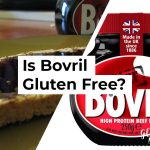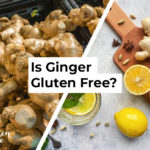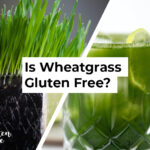Have you ever come across yeast extract when looking at a list of ingredients and wondered if it’s gluten free? You’re not alone. I found myself in a similar situation recently. And I learned the hard way!
What is Yeast Extract?
Yeast extract is a common food ingredient derived from yeast cells. It’s often used to add flavor to various foods, including soups, sauces, and snacks. Autolyzed yeast extract is a flavor-enhancing ingredient made from yeast cells that have undergone a process called autolysis. During autolysis, the yeast cells are broken down using their own enzymes, releasing various compounds, including amino acids and nucleotides, that contribute to the savory or umami taste in foods.
Yeast extract is derived from yeast cells that have been broken down through a process called autolysis. This specific process creates a rich, umami flavor which is why this ingredient is popular in a large number of products.
Yeast extract is commonly found in a variety of packaged and processed foods, including:
- Soups and Broths: Yeast extract is often used to enhance the flavor of canned or instant soups and broths, adding depth and complexity to the taste.
- Sauces and Gravies: Many sauces and gravies, including those for pasta and meats, incorporate yeast extract to elevate their overall flavor profile.
- Snacks: Certain savory snacks like potato chips, crackers, and popcorn might contain yeast extract to provide a more robust and enjoyable taste.
- Vegetarian and Vegan Products: Yeast extract is a popular ingredient in meat substitutes and plant-based products, contributing a meaty or umami flavor without the use of animal products.
- Seasonings and Condiments: Some seasonings, condiments, and spreads use yeast extract to enhance their taste, offering a savory kick to various dishes.
- Processed Foods: Yeast extract can be found in a range of processed foods, including ready-made meals, instant noodles, and pre-packaged convenience foods.
Let’s find out if this commonly used food ingredient is likely to contain any wheat or gluten ingredients/derivatives . . .
Is Yeast Extract Gluten Free?
NO
While yeast extract itself doesn’t inherently contain gluten, cross-contamination is possible during production, so some yeast extracts might not be entirely gluten-free. According to BeyondCeliac, ‘Yeast extract and autolyzed yeast extract may contain gluten from barley.’
I recently learned this the hard way by eating a frozen meal from a grocery store. It wasn’t labeled gluten free and unfortunately I think the yeast extract was the reason why. It’s the only ingredient I could think of on the list. In America and other certain other countries, manufacturers do not have to disclose the source of yeast extract and other food additives. Always keep that in mind when taking a chance on products that are not labeled gluten free. Over time, I have become more and more wary of taking the risk.
If you have celiac disease or are highly sensitive to gluten, it’s smart to look for any food products that contain yeast extract to be specifically labeled as gluten-free so you can ensure they meet your dietary requirements. Always check product labels and consult with manufacturers if you have concerns about gluten content. And check GlutenBee. 🙂
Related: Is Wheatgrass Gluten Free?

Photo: Diana Polekhina
Yeast Extract Ingredients
The main nutritional components of yeast extracts include partly hydrolyzed protein with 35–40% of free amino acid, and they also contain B vitamins and some trace elements. (source)
Yeast Extract Nutrition Facts
Serv. Size: 1 Tsp (6 g), Amount Per Serving: Calories 11, Total Fat 0.1g, Cholesterol (0 mg), Sodium 178 mg, Total Carb. 1.2 g, Sugar 0.1 g, Protein 1.4 g. (source)
Additional Information about Yeast Extract
Yeast extract is known to contain a variety of vitamins and nutrients that result from the breakdown of yeast cells during the autolysis process.
B Vitamins: Yeast extract is particularly rich in various B vitamins, including:
- B1 (Thiamine): Essential for converting food into energy and maintaining proper nerve function.
- B2 (Riboflavin): Important for energy production, metabolism of fats, and maintaining healthy skin and eyes.
- B3 (Niacin): Vital for energy metabolism and proper functioning of the nervous system.
- B5 (Pantothenic Acid): Plays a role in energy metabolism, hormone production, and red blood cell formation.
- B6 (Pyridoxine): Supports brain health, immune function, and the production of neurotransmitters.
- B9 (Folate or Folic Acid): Essential for cell division, DNA synthesis, and overall growth.
- B12 (Cobalamin): Necessary for red blood cell formation, nerve function, and DNA synthesis.
Protein: Yeast extract contains proteins that break down into amino acids during the autolysis process. These amino acids are important for building and repairing tissues, as well as various bodily functions.
Minerals: Yeast extract can provide minerals such as potassium, magnesium, phosphorus, and zinc. These minerals are important for maintaining proper electrolyte balance, bone health, and various cellular processes.
Nucleotides: These compounds play a role in cell communication and energy transfer within the body.
Dietary Fiber: While the fiber content is not usually high, yeast extract may contain a small amount of dietary fiber.
It’s important to note that while yeast extract can offer certain nutritional benefits, it is often used in small amounts as a flavor enhancer rather than a primary source of nutrients. If you’re looking for specific nutritional information for a particular yeast extract product, I recommend checking the product label or contacting the manufacturer for detailed nutritional content.
Read more facts about Yeast Extract from Wikipedia: https://en.wikipedia.org/wiki/Yeast_extract
Related articles about other related products:






